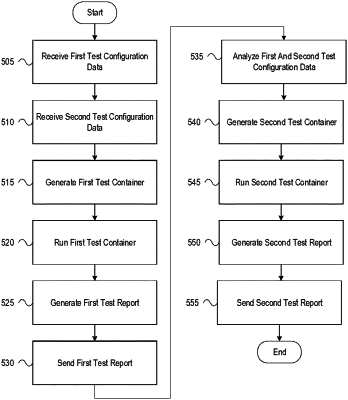| CPC G06F 11/3664 (2013.01) [G06F 11/3684 (2013.01); G06F 11/3688 (2013.01); G06F 11/3692 (2013.01); G06F 3/0482 (2013.01)] | 20 Claims |

|
1. An automated testing computing platform comprising:
at least one processor;
a communication interface communicatively coupled to the at least one processor; and
memory storing computer-readable instructions that, when executed by the at least one processor, cause the automated testing computing platform to:
send a first graphical user interface to a first computing platform, wherein sending the first graphical user interface to the first computing platform causes the first computing platform to display the first graphical user interface;
in response to sending the first graphical user interface to the first computing platform, receive, from the first computing platform, first test configuration data for a first test;
receive, from a second computing platform, second test configuration data for a second test;
generate a first container based on the first test configuration data;
run the first container to generate a first set of test results;
generate a first test report based on the first set of test results;
send the first test report to the first computing platform, wherein the sending the first test report to the first computing platform causes the first computing platform to display the first set of test results;
analyze the first test configuration data and the second test configuration data;
based on analyzing the first test configuration data and the second test configuration data, determine that a subset of the first set of test results is to be used during an execution of the second test;
based on determining that the subset of the first set of test results is to be used during the execution of the second test, generate a second container based on the second test configuration data and the subset of the first set of test results; and
run the second container to generate a second set of test results.
|